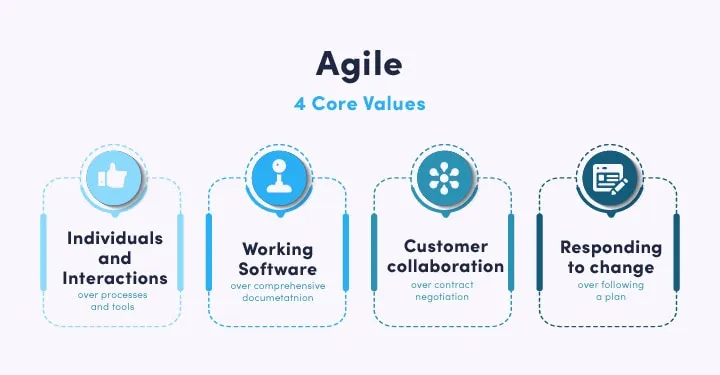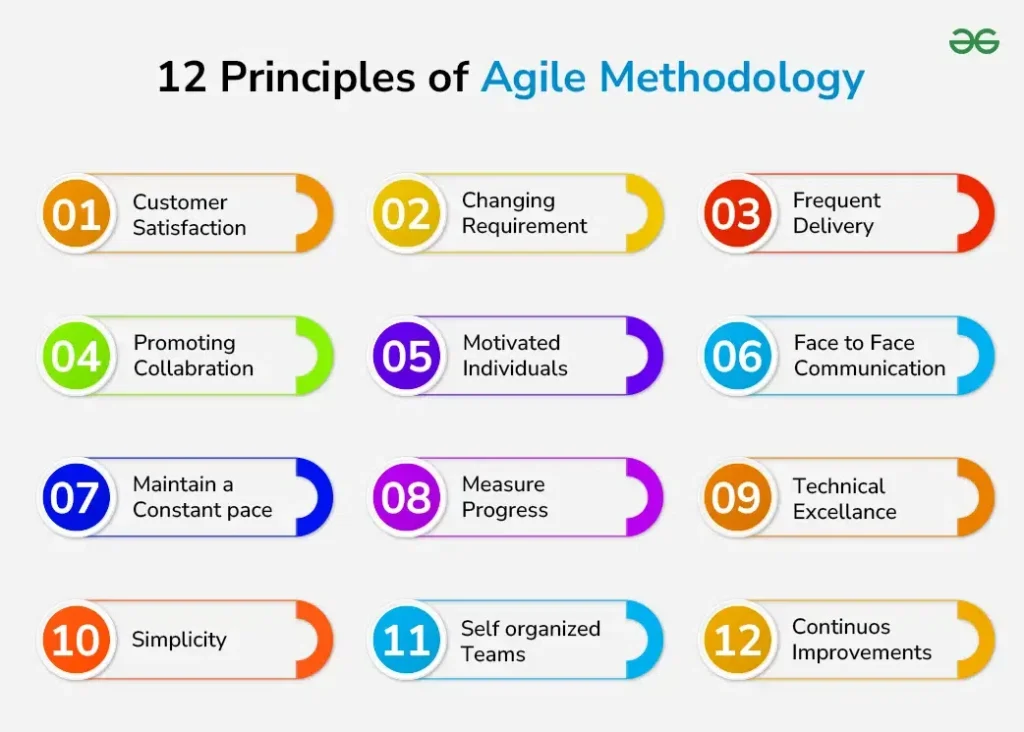
The Agile Manifesto
Introduction: A Paradigm Shift in Project Management
Hey there, tech enthusiasts! Ever felt like traditional project management approaches were about as flexible as a steel beam? Let me introduce you to the game-changing Agile Manifesto—a revolutionary approach that’s been transforming how teams work across industries.
Imagine a world where project development isn’t a rigid, linear process but a dynamic, collaborative journey. That’s exactly what the Agile Manifesto delivers. Born from the frustrations of software developers in the early 2000s, this manifesto isn’t just a document—it’s a cultural revolution in how we think about work, collaboration, and delivering value.
What Exactly is the Agile Manifesto?
At its core, the Agile Manifesto is a foundational document that reimagines how teams approach project development. Created by a group of forward-thinking software professionals in 2001, it represents a radical departure from traditional, bureaucratic project management methodologies.
The Four Core Values: A New Way of Working

The Agile Manifesto is built on four fundamental values that fundamentally reshape how teams collaborate and deliver results:
- Individuals and Interactions Over Processes and Tools
While processes and tools are important, the Agile Manifesto emphasizes the power of human connection. It’s about empowering team members to communicate openly, solve problems collaboratively, and leverage their collective creativity. - Working Software Over Comprehensive Documentation
Say goodbye to endless documentation that nobody reads! Agile prioritizes delivering functional, valuable software quickly. Documentation still matters, but it shouldn’t slow down actual progress. - Customer Collaboration Over Contract Negotiation
Instead of getting bogged down in rigid contracts, Agile encourages continuous dialogue with customers. This approach ensures the end product truly meets user needs and can adapt to changing requirements. - Responding to Change Over Following a Plan
Traditional project management treats changes like emergencies. Agile sees change as an opportunity for improvement. Flexibility isn’t just welcomed—it’s celebrated.
The Twelve Principles: A Deeper Dive

Beyond these four values, the Agile Manifesto outlines twelve principles that provide a comprehensive framework for implementation:
- Satisfy customers through early and continuous delivery of valuable software
- Welcome changing requirements, even late in development
- Deliver working software frequently (weeks rather than months)
- Ensure close, daily cooperation between business people and developers
- Build projects around motivated individuals, providing support and trust
- Enable face-to-face conversations as the most efficient communication method
- Working software is the primary measure of progress
- Promote sustainable development with a consistent pace
- Continuous attention to technical excellence and good design
- Simplicity—maximizing work not done—is essential
- Self-organizing teams produce the best architectures, requirements, and designs
- Regular team reflections on how to become more effective
Beyond Software: Agile’s Universal Appeal
While the Agile Manifesto originated in software development, its principles have transcended industry boundaries. Today, you’ll find Agile methodologies in:
- Marketing teams crafting dynamic campaign strategies
- Educational institutions designing adaptive learning programs
- Product management across various sectors
- Startup environments requiring rapid iteration
Popular Agile Methodologies
The Agile approach isn’t a one-size-fits-all solution. Different methodologies cater to unique team needs:
| Methodology | Key Characteristics | Best Suited For |
|---|---|---|
| Scrum | Sprint-based, defined roles, regular retrospectives | Software development, product teams |
| Kanban | Visual workflow management, continuous delivery | Support teams, maintenance projects |
| Extreme Programming (XP) | Technical practices, pair programming | High-complexity technical projects |
| Lean Development | Minimizing waste, maximizing value | Efficiency-focused organizations |
Implementing Agile: Practical Tips
Ready to embrace the Agile mindset? Here are some actionable strategies:
- Start small and be patient with the transition
- Invest in team training and cultural shift
- Use collaborative tools like Jira, Trello, or Asana
- Encourage open communication and psychological safety
- Conduct regular sprint retrospectives
- Remain flexible and continuously learn
Top Agile Project Management Tools
To support your Agile journey, consider these powerful tools:
- Jira Software – The gold standard for agile project tracking
- Trello – Simple, visual task management
- Asana – Flexible workflow organization
- Monday.com – Customizable project tracking
- Slack – Team communication and integration
Conclusion: Your Agile Journey Begins
The Agile Manifesto isn’t just a methodology—it’s a mindset. By embracing its values and principles, you’re not just changing how you work; you’re revolutionizing your approach to delivering value.
Are you ready to transform your team’s potential? Start your Agile journey today!
Disclaimer: Every team’s Agile implementation will look different. The key is finding what works best for your unique context.
Remember: Agile is a journey, not a destination. Keep learning, adapting, and growing!
